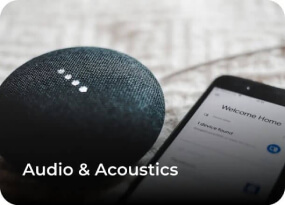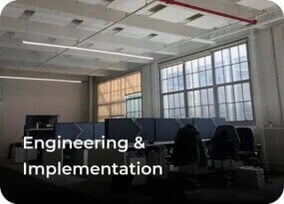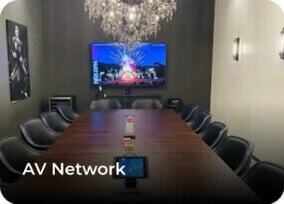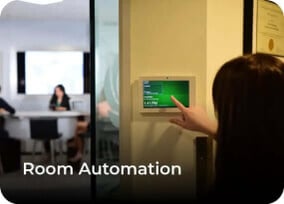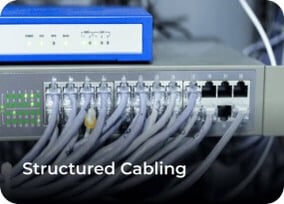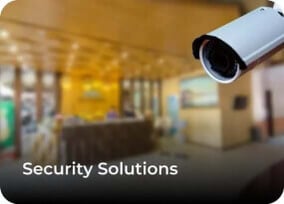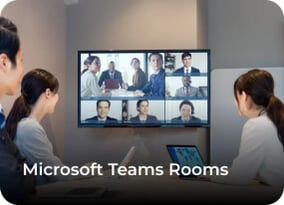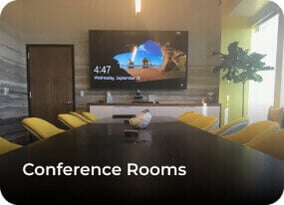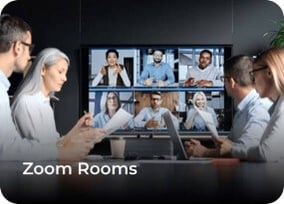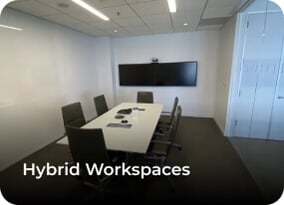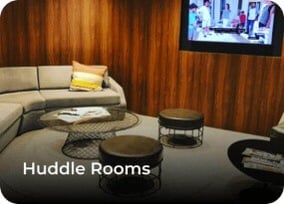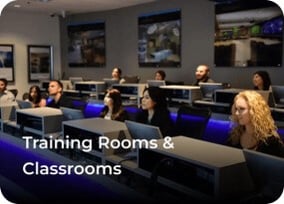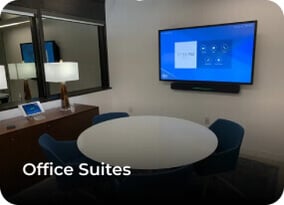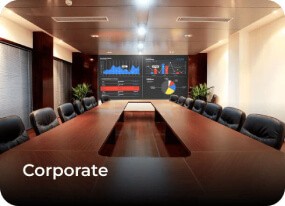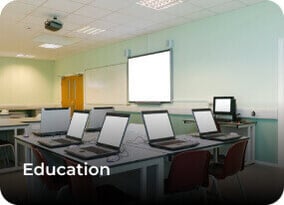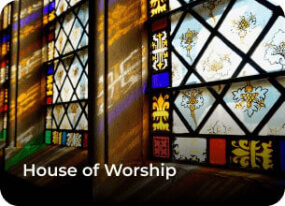Hybrid Workspaces
We integrate real-time messaging platforms, high-quality video conferencing systems, virtual meeting rooms, and intuitive collaboration tools to create a unified and efficient workflow. With AV Planners, your team can meet, share, and innovate effortlessly — from anywhere.
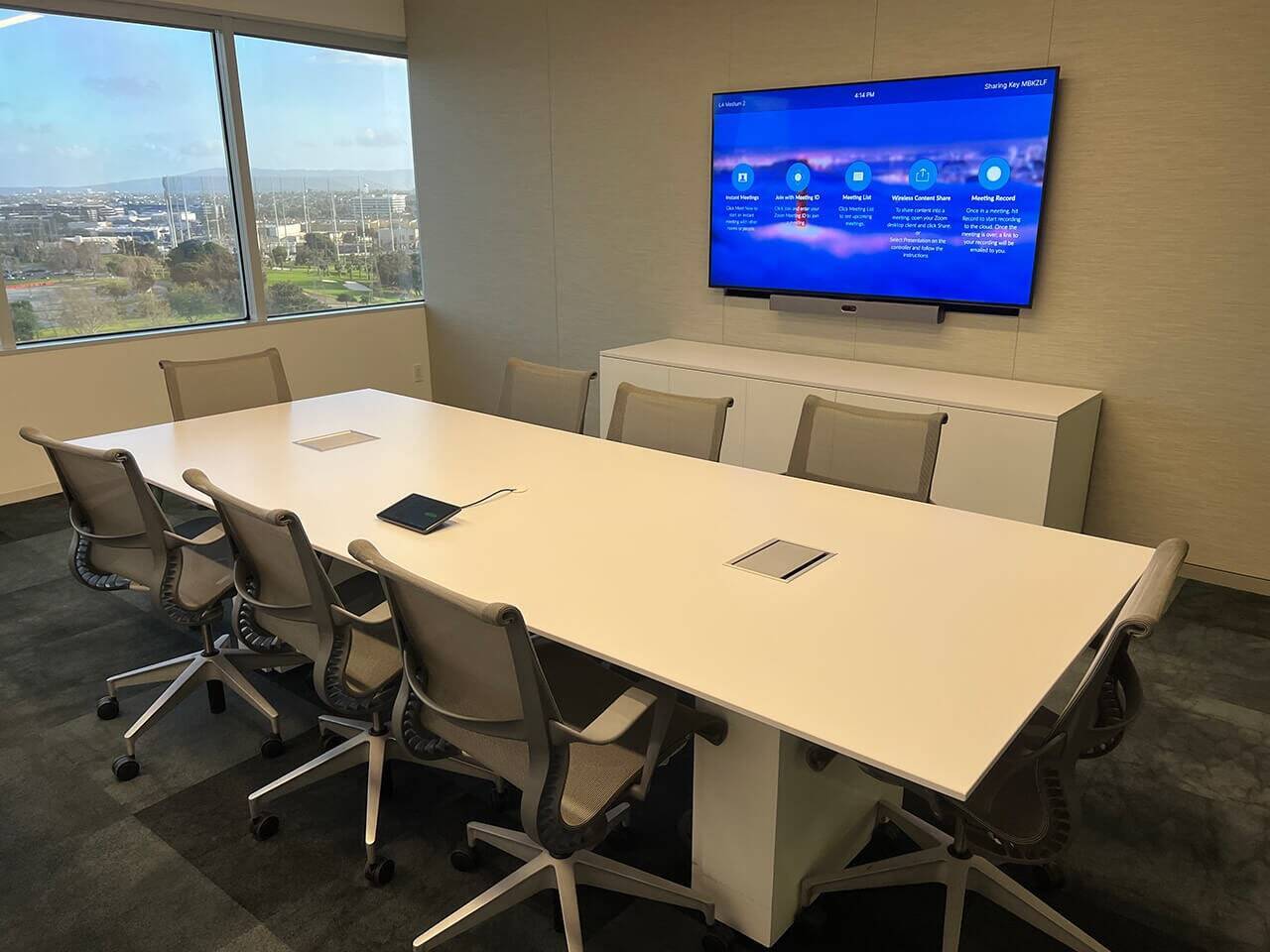
Our Hybrid Workspace Solutions Include:
Video Conferencing Systems:
Reliable, high-definition video for virtual and hybrid meetings.
Real-Time Messaging and Collaboration Tools:
Instant communication across devices and platforms.
Virtual Meeting Room Integration:
Fully equipped spaces for seamless hybrid collaboration.
Touchless Room Controls and Scheduling Systems:
Streamline room usage and reduce physical contact.
Secure Connectivity and Cloud-Based Solutions:
Protect your data and enable flexibility for your workforce.
Ready to build a connected hybrid workspace?
Learn how AV Planners can improve your workspace collaboration.
Contact AV PlannersAudio
Speakers
In-ceiling speakers and sound bars maximize audibility for video conferencing for in-person meeting attendees.
Microphones
Install microphones with clear speech intelligibility for in-person and online participants utilizing video conferencing solutions.
Acoustical Engineering
Decrease noise and audio interferences while maintaining your room’s aesthetic with personalized acoustic paneling.
Video
Video Displays and Walls
Customize and install large display screens to provide optimal video conferencing and content-sharing conditions.
Video Conferencing
Unite your team in any environment, whether in-person, hybrid or remote with Microsoft Teams Rooms’ web-based video conferencing system.
Cameras
Utilize high-definition, wide-angle cameras to host professional virtual meetings and video conference calls.
Frequently Asked Questions
What AV solutions do you offer for Microsoft Teams Rooms?
AV Planners provides turnkey Microsoft Teams Room solutions, including certified cameras, microphones, touch panels, and room control systems. We handle design, installation, and integration to ensure seamless communication and collaboration.
Can AV Planners integrate Microsoft Teams with existing conference room technology?
Yes, our team specializes in upgrading or retrofitting existing meeting spaces with Microsoft Teams-certified hardware, optimizing your current infrastructure for hybrid work environments without requiring a full system overhaul.
Do you offer support and maintenance for Microsoft Teams Room setups?
Absolutely. AV Planners offers managed services, remote support, and service-level agreements (SLAs) to keep your Microsoft Teams Rooms running smoothly with regular updates, troubleshooting, and on-site service when needed.
Can I use this module with existing HubSpot themes?
Yes, this module integrates smoothly with any HubSpot theme, complementing your design and functionality needs.
Look at our other services
Microsoft Teams Rooms
AV Planners is dedicated to elevating your Microsoft Teams Room experience, particularly during group meetings.
Learn MoreZoom Rooms
AV Planners is committed to enhancing your Zoom Room experience, especially for group meetings.
Learn MoreHybrid Workspaces
Our hybrid workspace solutions ensure that communication remains seamless, whether your team members are in the office, working...
Learn MoreTraining Rooms & Classrooms
Easy-to-use education technology enables online learning for enhanced yet simplified learning experiences.
Learn MoreConference Rooms
Transform your conference rooms into collaborative hubs that drive innovation and productivity.
Learn MoreMultipurpose Spaces
We understand the versatility and significance of multipurpose rooms in accommodating various activities and events.
Learn MoreHuddle Rooms
Our comprehensive offerings include cutting-edge audiovisual equipment, interactive displays, and high-quality audio systems, all optimized...
Learn MoreOffice Suites
Private office suites create a flexible, multipurpose space for day-to-day operations and virtual or in-person collaboration.
Learn MoreOur Structured Cabling Services Include:

Low-Voltage Cabling Installation
Voice, data, and AV network wiring tailored to your environment

Fiber Optic Cabling
High-speed backbone cabling for maximum bandwidth and performance

Rack and Stack Services
Equipment rack installation, termination, and cable management

Cable Testing and Certification
Ensure system reliability with professional testing and compliance verification

Labeling and Documentation
Organized and properly labeled cabling for easy management and troubleshooting

Patch Panel Installation and Termination
Clean, efficient connections between equipment and network devices

Wireless Access Point Cabling
Optimized placement and wiring for Wi-Fi systems across offices, campuses, and facilities

Upgrades and Moves/Adds/Changes (MAC)
Scalable solutions to support your growth and evolving technology needs
Get In Touch
Get Closer To Your
Goal Now
Schedule a consultation for cost and timeframe details.
Call Us Now
+416-638-6112
Our Location
183 North Martel Ave
Suite 230
Los Angeles, CA 90036
info@avplanners.com
